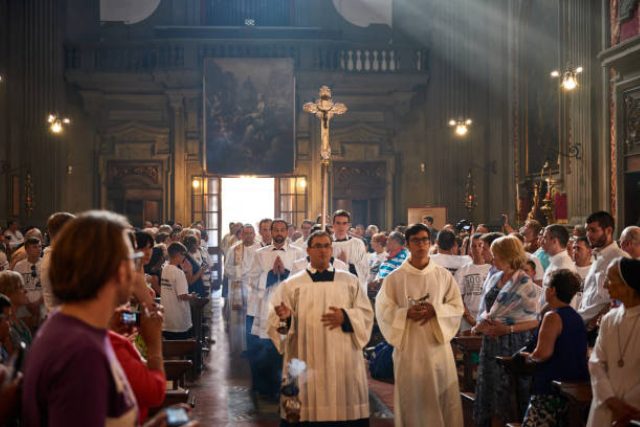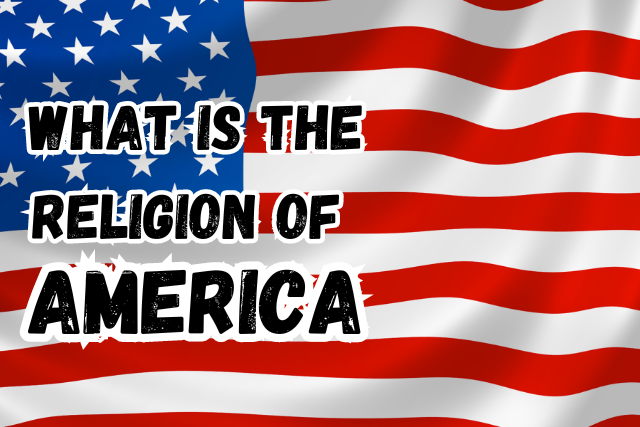What is the Religion of Italy? Unveiling the Tapestry of Faith

Italy, known for its ancient whispers echoing through the Colosseum and the graceful glide of gondolas through picturesque canals, is a country rich in cultural heritage. At the heart of its identity lies the question: What is the religion of Italy? This inquiry delves into the intricate tapestry of faith that weaves through the nation’s history, art, and social fabric. Join us on a detailed exploration of Italy’s vibrant religious landscape, where Catholicism reigns supreme but is accompanied by a diverse array of beliefs and practices.
What is the religion of Italy?
Much like in France, Catholicism stands as the dominant religion in Italy. With estimates suggesting that 61-74% of Italians identify as Catholic, the influence of the Catholic Church resonates deeply within Italian society. The Vatican, the headquarters of the Catholic Church, is located within Italy’s borders.
However, Italy’s religious landscape is becoming more diverse. Recent surveys show a decline in the percentage of people identifying as Catholic, with a rise in irreligiousness.
Catholicism in Italy

The presence of Catholicism in Italy is undeniable. Statistics speak for themselves, with estimates suggesting that around 61% to 74% of the population identify as Catholic [3, 4]. The very heart of the Catholic Church, Vatican City, lies nestled within Rome, home to the Pope. This geographical proximity further solidifies the religion’s centrality in Italy.
This dominance is evident throughout the country. From the awe-inspiring grandeur of St. Peter’s Basilica to the charming village churches nestled in quaint towns, Catholicism shapes the Italian landscape. Religious holidays hold immense significance, with Christmas, Easter, and various saint’s days celebrated with immense fervor. Traditions like attending the Christmas Eve mass (Messa di Natale) and indulging in the elaborate Easter lunch (pranzo di Pasqua) are deeply ingrained in Italian culture.
A Look Inside Catholicism’s Influence
Catholicism’s influence extends far beyond religious holidays and grand structures. Here’s a closer look at how it permeates various aspects of Italian life:
- Education: Many schools in Italy, particularly in the past, were affiliated with the Catholic Church. Even in modern times, Catholic values and teachings may find subtle integration into the curriculum of some schools.
- Social Services: Historically, the Catholic Church has played a significant role in providing social services like healthcare and charity. While the government now shoulders much of this responsibility, Catholic charities and organizations remain active contributors to social welfare.
- Art and Architecture: Italy’s artistic heritage is deeply intertwined with Catholicism. From the breathtaking frescoes adorning church ceilings to the masterful sculptures depicting biblical scenes, art serves as a powerful testament to the enduring influence of faith.
- Family Life: Religious traditions often play a role in family celebrations in Italy. Baptisms, confirmations, weddings, and funerals may all incorporate Catholic rituals and customs.
- Moral Compass: Catholic teachings on morality have historically shaped societal values in Italy, with its influence felt on issues like marriage, family structure, and sexual ethics.
A Glimpse into Catholic Practices

Understanding how Italians practice their faith can offer a deeper appreciation for Catholicism’s role in the country. Here’s a glimpse into some common practices:
- Regular Mass Attendance: Traditionally, attending Sunday mass has been a cornerstone of Catholic practice in Italy. While church attendance might be on the decline, many Italians still find attending mass on special occasions or during religious holidays to be important.
- Veneration of Saints: Catholicism in Italy is characterized by a strong veneration of saints. Specific saints are often associated with protection for certain aspects of life or with specific professions. Shrines dedicated to saints and pilgrimages to significant religious sites are common expressions of this devotion.
- Importance of Rosary Prayers: The rosary, a string of prayer beads used for meditation and specific prayers, holds significance for many Catholic Italians. Rosary prayers might be recited individually or communally, offering a sense of comfort and focus on faith.
Alongside Catholicism, here are some other religions practiced in Italy:
Other Christian Denominations
Protestantism, Orthodoxy, and denominations like Jehovah’s Witnesses add to the Christian tapestry in Italy, though in smaller percentages compared to Catholicism [2, 3]. These denominations may have their own places of worship, traditions, and practices.
Islam

Islam is a growing presence in Italy, with estimates suggesting a Muslim population of around 3.7% [4]. This growth is primarily attributed to immigration. Mosques are being built in various Italian cities to cater to the needs of the growing Muslim population.
Other Religions
Hinduism, Buddhism, Judaism, and other faiths also have adherents in Italy, though their numbers are relatively smaller [2, 4]. These communities often have their own cultural centers and places of worship, allowing them to practice their faith freely.
The Shifting Sands: Secularism and Religious Decline in Italy
Italy’s religious landscape is undergoing a transformation. Recent surveys suggest a decline in the number of practicing Catholics, with a rise in secularism and irreligiosity [3]. Factors like modernization, social changes, and dwindling church attendance contribute to this shift. However, it’s important to understand this decline in context:
- Generational Differences: Younger generations in Italy tend to be less religious compared to older generations. This is a trend observed in many developed countries around the world.
- Urban vs. Rural Divide: Religious adherence tends to be stronger in rural areas compared to urban centers. This is likely due to a stronger sense of community and tradition in rural settings.
- Cultural vs. Personal Faith: Many Italians may still identify as Catholic due to cultural heritage, even if their personal faith isn’t as strong. Traditions associated with Catholicism might still hold significance, even with a decline in regular religious practice.
The Impact of Secularism
The rise of secularism in Italy has several implications:
- Separation of Church and State: The Italian government is officially secular, meaning it doesn’t favor any particular religion. This is a shift from the past, where the Catholic Church held significant political influence.
- Evolving Social Values: Secularism has contributed to a more open discussion on social issues like same-sex marriage and abortion, topics that were previously heavily influenced by Catholic teachings.
- Focus on Individual Choice: Secularism emphasizes individual choice in matters of faith. This allows for a greater diversity of religious beliefs and practices to flourish in Italy.
The Future of Faith in Italy: A Coexistence of Traditions and Change
Italy’s religious future promises to be an intriguing mix of continuity and change. Here are some potential scenarios:
- Catholicism Adapts: The Catholic Church in Italy might adapt its practices and messages to resonate better with younger generations and a more secular society.
- Interfaith Dialogue: Increased dialogue and understanding between different faiths can foster a more inclusive and peaceful religious landscape.
- Rise of Non-Religious Identities: The number of people who identify as non-religious or agnostic might continue to rise in Italy.
Challenges and Opportunities
This evolving landscape presents both challenges and opportunities:
- Challenges: Interfaith tensions, social divisions based on religious beliefs, and the potential decline of religious institutions are all potential challenges that need to be addressed.
- Opportunities: Interfaith dialogue, fostering religious tolerance, and celebrating the diversity of beliefs can create a more inclusive and vibrant society.
FAQs About What is the Religion of Italy
What is the main religion in Italy?
Italy’s religious landscape is dominated by Catholicism. Estimates suggest that around 61% to 74% of the population identify as Catholic [3, 4]. The Vatican City, the heart of the Catholic Church and home to the Pope, is located within Rome, further solidifying Catholicism’s central role.
Are there other religions practiced in Italy?
Absolutely! While Catholicism reigns supreme, Italy boasts a diverse religious tapestry. Protestantism, Orthodoxy, Islam, Hinduism, Buddhism, and Judaism all have adherents in the country, with Islam being the fastest-growing faith due to immigration [2, 3, 4].
Is Italy a religious country?
Italy’s relationship with religion is complex. Traditionally, it has been a very religious nation with Catholicism deeply woven into social fabric. However, recent years have seen a rise in secularism, particularly among younger generations. Many Italians might still identify as Catholic due to cultural heritage, even if their personal faith isn’t as strong [3].
How do religious festivals play a role in Italian life?
Religious festivals are vibrant expressions of faith and community spirit in Italy. From grand processions on major holidays to local village fairs, these celebrations bring people together. Food also takes center stage, with special dishes prepared for specific holidays, like the elaborate Christmas Eve fish feast (Festa dei sette pesci) [3].
What does the future hold for religion in Italy?
The future of religion in Italy is likely to be a blend of continuity and change. Catholicism might adapt its practices to resonate with a more secular society. Interfaith dialogue and a growing acceptance of diverse beliefs could create a more inclusive religious landscape. The number of people who identify as non-religious might also rise [3].
Summing Up
Italy has many different religions. The main one is Catholicism, which is very important. But there are also other religions becoming more common. This mix of religions makes Italy’s religious landscape interesting. Catholicism has been a big part of Italy for a long time, but things are changing. As Italy moves forward, religion will continue to be important. It’s like a story that keeps changing, with Catholicism still a big part, but also other religions becoming more noticeable. This shows how religion, society, and what people believe are always changing together.





